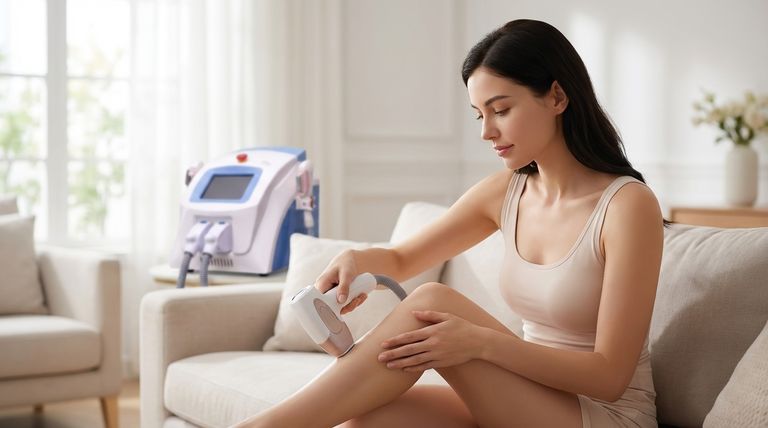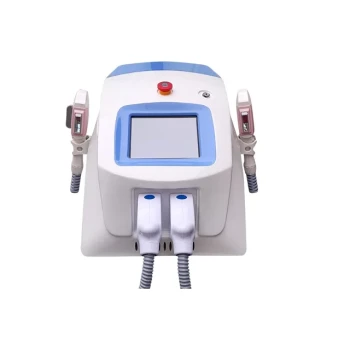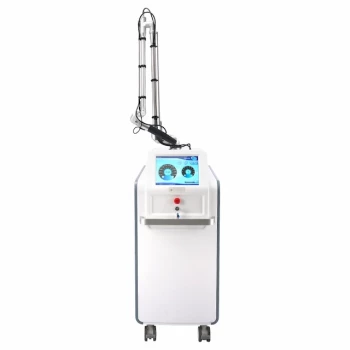For the right candidate, at-home Intense Pulsed Light (IPL) devices are designed to be safe for permanent hair reduction. Their safety is not absolute but is contingent upon the user's skin and hair color, adherence to instructions, and the device's built-in protective features. Unlike professional treatments, at-home devices use a lower energy output to minimize the risk of user error.
The core principle of at-home IPL safety is the partnership between technology and user responsibility. While devices have features like skin tone sensors, their safe operation depends entirely on you being the correct candidate and using the device exactly as directed.

How At-Home IPL Technology is Designed for Safety
The primary difference between professional and at-home IPL is the intensity. At-home devices are engineered with limitations that prioritize safety over speed, making them suitable for non-clinical use.
Understanding the Mechanism
IPL is not a true laser. It uses a broad spectrum of light that is filtered to target melanin, the pigment that gives hair its color. This light energy is absorbed by the hair's melanin, converts to heat, and damages the follicle, inhibiting future growth.
Lower Energy Output
At-home devices operate at a significantly lower energy fluence (energy level) than professional machines. This is a deliberate safety design to reduce the risk of burns, blisters, or skin discoloration, even with improper use. The trade-off is that it requires more consistent treatments over a longer period to see results.
Integrated Skin Tone Sensors
Most modern IPL devices include a skin tone sensor. This critical safety feature automatically measures the melanin in your skin before each flash. If the skin is too dark, the device will lock and refuse to flash, preventing it from delivering energy that could cause a burn.
Skin Contact Sensors
Devices are also equipped with contact sensors that ensure the treatment window is pressed firmly against the skin. This prevents accidental flashes into the open air, which could be harmful to the eyes.
Are You a Safe Candidate for IPL?
A device's safety features are only effective if the user is a suitable candidate. The effectiveness and safety of IPL are entirely dependent on the contrast between your skin tone and hair color.
The Importance of Melanin Contrast
IPL technology requires a strong contrast to work safely. It needs to "see" the dark melanin in the hair follicle against a background of lighter skin containing less melanin.
Safe Skin and Hair Combinations
The ideal candidate has fair to light-brown skin and dark brown or black hair. The device can easily target the hair follicle without heating the surrounding skin.
High-Risk and Ineffective Combinations
At-home IPL is not safe for dark brown and black skin tones (Fitzpatrick skin types V and VI). The high concentration of melanin in the skin will absorb the light energy, leading to a high risk of burns, scarring, or hyperpigmentation.
Similarly, IPL is ineffective on very light hair (blonde, red, grey, or white) because there isn't enough melanin in the hair to absorb the light energy.
Common Pitfalls and Safety Risks to Avoid
Most safety issues arise from user error or a failure to understand the device's limitations.
Ignoring the Patch Test
Before your first full treatment, you must perform a patch test on a small area. This ensures your skin does not have an adverse reaction to the treatment. Skipping this step is a significant risk.
Using on Tanned or Sun-Exposed Skin
Never use IPL on skin that is tanned or has been recently exposed to the sun. Sun exposure increases the melanin in your skin, dramatically raising the risk of burns and discoloration, even if your natural skin tone is light.
Treating Unsuitable Areas
Do not use IPL directly over tattoos, dark moles, large freckles, or birthmarks. The high concentration of pigment in these areas will absorb too much energy. You must also avoid using it near the eyes.
Improper Skin Preparation
The treatment area must be shaved, clean, and dry before use. Do not wax, epilate, or pluck, as the hair root must be present for the IPL to target. Lotions, creams, or deodorants can also cause adverse skin reactions when exposed to the light pulse.
Making the Right Choice for Your Goal
To determine if at-home IPL is a safe and effective choice for you, evaluate your specific profile against the technology's requirements.
- If your primary focus is safety on fair skin with dark hair: You are the ideal candidate. Proceed with a patch test and follow the device instructions meticulously.
- If you have dark brown or black skin: At-home IPL is not a safe option. You should consult a dermatologist about professional hair removal methods specifically designed for darker skin tones.
- If you have blonde, red, or grey hair: The device will be ineffective. While not inherently dangerous, it will not produce the desired results.
- If you have recently tanned or plan to be in the sun: You must wait until your tan has completely faded before starting or resuming IPL treatments to avoid skin damage.
Ultimately, your safety relies on an honest assessment of your skin tone and a disciplined approach to the treatment protocol.
Summary Table:
| Safety Factor | Key Consideration |
|---|---|
| Ideal Candidate | Fair to light-brown skin with dark brown/black hair. |
| High Risk | Dark brown or black skin tones (Fitzpatrick V & VI). |
| Ineffective | Blonde, red, grey, or white hair. |
| Key Safety Feature | Built-in skin tone and contact sensors. |
| Critical Precaution | Avoid use on tanned skin and perform a patch test. |
Ready to elevate your client's hair removal experience with professional-grade technology?
BELIS specializes in professional medical aesthetic equipment for clinics and premium beauty salons. Our advanced systems offer superior safety, efficacy, and results compared to at-home devices.
Contact our experts today to discover how our professional IPL solutions can grow your business and ensure superior client outcomes.
Visual Guide

Related Products
- IPL SHR Hair Removal Machine for Permanent Hair Removal
- Clinic Use IPL and SHR Hair Removal Machine with Nd Yag Laser Tattoo Removal
- IPL SHR+Radio frecuency machine
- Multifunctional Laser Hair Growth Machine Device for Hair Growth
- Diode Laser SHR Trilaser Hair Removal Machine for Clinic Use
People Also Ask
- How quickly do you see IPL results? A Realistic Timeline for Clearer Skin
- Can you use hair removal device on private parts? A Guide to Safe Bikini Area IPL
- Does IPL hair removal really work? Unlock Long-Term Hair Reduction with Science
- Does IPL work on all skin types? The critical role of the Fitzpatrick scale in safety and results
- Does IPL hair removal actually work? Achieve Long-Term Hair Reduction



















